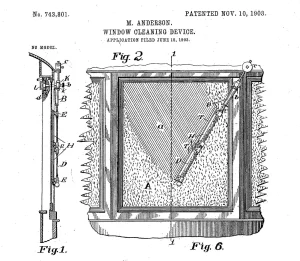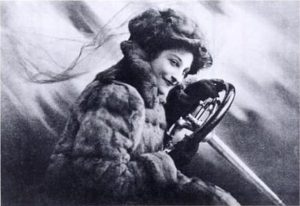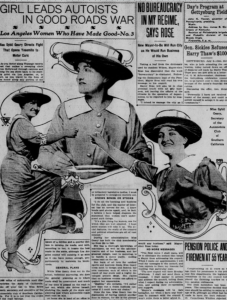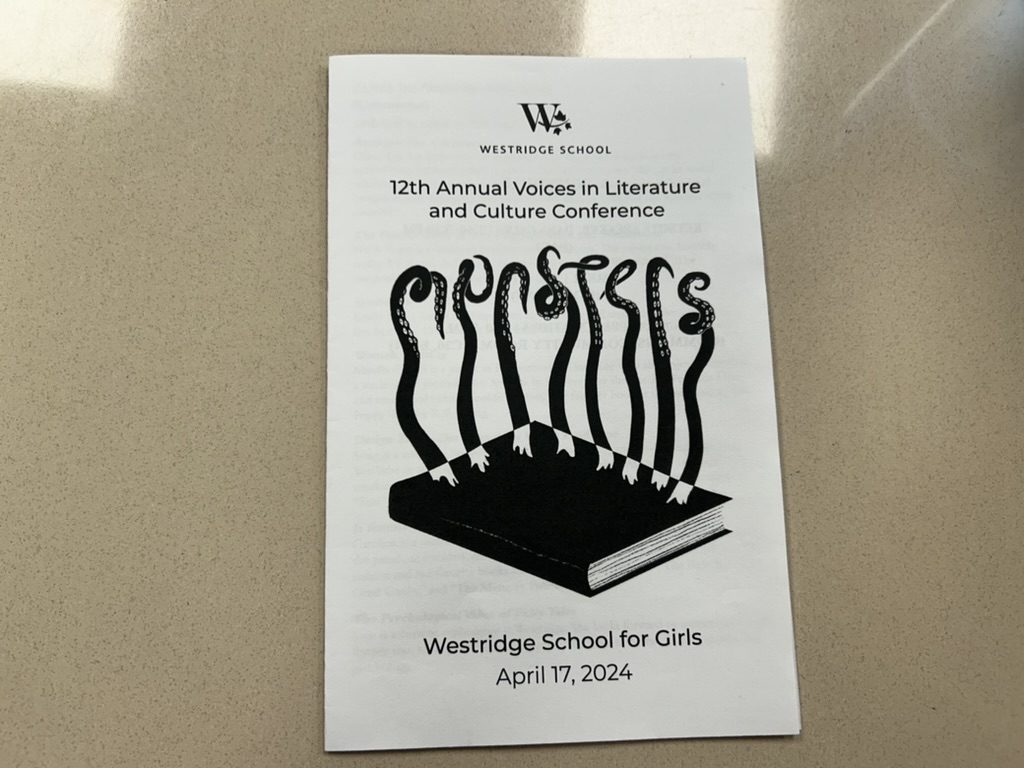Anyone who has ever braved Westridge’s student parking lot should appreciate automotive safety features.
…It’s a rough world out there.
Women are far too often the butt of bad driver jokes, but in reality, we were the ones who innovated cars as we know them today. Inventors of rear-view mirrors, windshield wipers, glove compartments, and even roofs, early 20th-century women revved up innovation to accelerate comfort and safety on the road. Women were even advocates of driving electric before it was cool! Take that, Elon Musk.
Just a few weeks ago, a lecture about early urban automobiles I attended at the Western History Association Conference piqued my interest in the little-known ladies who shaped modern car culture. They varied in interests, concerns, and ideas, but they shared a suffragette mindset and a passion for technological advancement. Here, I want to highlight three innovators who were miles ahead of the curve.

Mary Anderson made driving in the rain less of a pain, but it all started because she was an impatient tourist. During her 1902 wintertime trip from her home in Alabama to New York City, she was frustrated with a streetcar driver who kept stopping the ride, getting out of the car, and wiping off his windshield—by hand—to keep snow from blurring the window. This prompted Anderson to put the pedal to the metal and create what she patented soon after as the creatively titled “Window Cleaning Device”—thin blades that whisked away weather at the touch of an in-car handle. The commercial car industry was not immediately impressed. One firm responded to her request to use the product in their newest models with their regrets that “we do not consider it to be of…value.” Ouch. Clearly, they were wrong because the windshield wiper caught on and is here to stay. Today, some cars even have rear-window windshield wipers, something of which I’m very jealous.

Dorothy Levitt was very concerned with personal safety. At a time when operating cars and being a woman outside of the home was dangerous, this journalist, car racer, and aviator triple-threat published a “Chatty Little Handbook” for women at the wheel. Its suggestion that women repurpose their compact makeup mirrors to see behind them when they drove eventually evolved into the creation of rear-view mirrors. In her book, Levitt also proposed the glove box, which she first wrote about as a “little drawer under the seat of the car” that could store clean gloves, spare handkerchiefs, hair pins, that ever-handy compact mirror, and “some chocolates” because they “are very soothing, sometimes!” To keep the need for chocolate’s soothing properties away, she suggested attaching revolvers to the side of one’s car for self-defense. For whatever reason, that one didn’t catch on.

Sybil Geary, ahead of her time as the woman director of the Automobile Club of Southern California, was not a speed demon like her contemporaries. She was a different kind of car enthusiast, but an equally driven one. Geary was instrumental in establishing traffic signals, setting speed limits, and regulating the roads at a time when teenagers built cars in their backyards and the 110 freeway ways mostly for horses. One thing that really got her goat was pedestrians crossing the road with no regard for oncoming traffic. Technically, there was nothing illegal about this act until the mid-1920s, but Geary didn’t care. She pejoratively deemed all the inexperienced, rural men who blindly strolled the city streets, gawking at the tall buildings, “Mr. Jay Walkers”—a play on the 1910s slang word “jay,” meaning, basically, an idiot. She was not-so-subtly implying that crossing the street in an undesignated spot was really dumb. In newspapers of the time, “Mr. Jay Walker” was shortened to “jaywalker” and eventually verb-ified into the act of “jaywalking.” Taking her lead, California imposed one of the nation’s strongest anti-jaywalking laws in 1925. Geary would not be pleased with the recent decriminalization of the act.
With their love of chocolate and crystal-clear windows and their contempt for jaywalking, it was women who sped up the auto industry and drove innovation forward to create the vehicles we drive today.

















![Dr. Zanita Kelly, Director of Lower and Middle School, pictured above, and the rest of Westridge Administration were instrumental to providing Westridge faculty and staff the support they needed after the Eaton fire. "[Teachers] are part of the community," said Dr. Kelly. "Just like our families and students."](https://westridgespyglass.org/wp-content/uploads/2025/03/dr.-kellyyy-1-e1748143600809.png)

















































